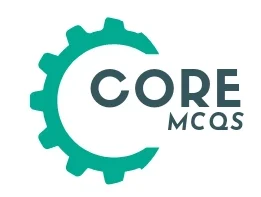Chemistry Chapter 15 Entry Test MCQs
64. The relative order of E1 elimination reactions of
(A) CH3CH2CH2CH2Br (B) CH3CH2CHBrCH3 (C) (CH3)3CBr with alcoholic KOH is
a.
b.
c.
d.
65. What is product of a nucleophillic substitution reaction between 2 – iodobutane and sodium ethoxide?
a. CH3CH = CHCH3
b. CH3CH = CHCH3
c. (CH3)2CHCH2OCH2CH3
d. CH3CH2CH(OCH2CH3)CH3
66.
a.
b.
c.
d.
67. The order of reactivity of elimination in RX with strong base follows the order
a. RCl < RBr < RI
b. RI < RBr < RCl
c. RCl < RI < RBr
d. RI < RCl < RBr
68. The major product when 2-bromobutane is treated with ethanolic KOH is
a. 1-butene
b. 2-hydroxybutane
c. 2-butene
d. butanol
69. Wurtz-Fittig reaction involves
a. one molecule of alkyl halide and one molecule of aldehyde
b. two molecules of alkyl halides
c. two molecules of aryl halides
d. one molecule of each of alkyl and aryl halide
70. Elimination from 2-bromobutane results in
a. Predominantly 1–butane
b. Equimolar mixture of 1 and 2–butene
c. 2–butyne
d. Predominantly 2–butene
71. Which of the following factor does not favour SN1 elimination in alkyl chloride?
a. Protic solvent
b. Stability of R+
c. Aprotic solvent
d. Steric hindrance
72. Maximum bond dissociation energy is possessed by
a. CH3Cl
b. CH3F
c. CH3I
d. CH3Br
73.
a.
b.
c.
d.
74. Which of the following is the best method to prepared alkyl halide from alcohol?
a. Reaction with PCl3
b. Reaction with HX in the presence ZnCl2
c. Reaction with PCl5
d. Reaction with SOCl2 in the presence of pyridine solvent
75. 1-bromobutane on reaction with alocoholic potassium hydroxide gives:
a. 2-butene
b. 1-butanol
c. 1-butyne
d. 1-butene
76. Which of the following factors does not affect the SN1 rate is:
a. Stability of the carbonium ion
b. Nucleophilicity of the attacking nucleophile
c. The nature of leaving group
d. Solvent system
77. 1–bromopropane reacts with alcoholic KOH, then with Br2 water to produce a product which again reacts with Alcoholic KOH to produce?
a. Propyne
b. 1,2-dibromopropane
c. Propene
d. Propane
78. The conversion of ter-Butyl bromide to iso-Butylene is:
a. SN1 reaction
b. SN2 reaction
c. E1 reaction
d. E2 reaction
79. The only common property in SN2 and SN1 reaction is:
a. Hybridization of C in transition state
b. Nature of alkyl group
c. Kinetics of the reaction
d. Nature of solvent
80. Which statement is true about SN 2 reactions?
a. Reaction is single step due to least stearic hindrance
b. It is unimolecular reaction
c. It is a bimolecular reaction because it occurs in two steps
d. Rate depends upon the formation of carbonium ion
81.
a.
b.
c.
d.
82. For dehydrohalogenation of alkyl halides, β-hydrogen is necessary. The alkyl halide which contains greater number of β-hydrogens
a. Secondary butyl iodide
b. neopentyl chloride
c. t-butyl chloride
d. Isobutyl bromide
83. ‘A’ reacts with potassium cyanide to form ethane nitrile which on hydrolysis yields acetic acid. ‘A’ is
a. methanol
b. Methyl chloride
c. ethanol
d. Ethyl chloride
84. The number of molecules taking part in the rate determining step is called________
a. Rate or reaction
b. Order of reaction
c. Extent of a reaction
d. Molecularity of a reaction
85. The charge on intermediate product of SN1 reaction is
a. Neutral
b. Positive
c. Negative
d. Both b and c
Grignard`s Reagent
86. What is a Grignard reagent?
a. A carbon chain attached to a metal
b. A carbon chain attached to magnesium
c. A carbon chain with an alcohol on the end
d. A carbon double bonded to an oxygen
87. A Grignard’s reagent may be made by reacting magnesium with
a. Ethyl iodide
b. Methyl amine
c. Ethyl alcohol
d. Diethyl ether
88. Which is not present in Grignard reagent
a. Halogen
b. Methyl group
c. -COOH group
d. Magnesium
89. When CO2 is made to react with ethyl magnesium iodide followed by acid hydrolysis the product formed is
a. Propanal
b. Propane
c. Propanol
d. Propanoic acid
90. Alkyl halides can be converted into Grignard reagents by
a. Warming them with Mg powder in dry ether
b. Boiling them with Mg ribbon in alcoholic solution
c. Warming them with MgCl2
d. Refluxing them with MgCl2 solution
91. hetrolytic fission of C – Mg bond in Grignard’s reagent will produce:
a. Carbon free radical
b. Carbocation
c. Carbene
d. Carbanion
92. When CH3Mgl is to react with acetone and the addition product is hydrolysed we get
a. Tertiary alcohol
b. Primary alcohol
c. and aldehyde
d. Secondary alcohol
93. _ compound will give secondary alcohol on reacting with methylmagnesium bromide?
a. Pentanal
b. Butyl formate
c. Methyl butanoate
d. 3- pentanone
94. Which of the following compounds does not give a tertiary alcohol upon reaction with methylmagnesium bromide?
a. 4-heptanone
b. 3-methylpentanal
c. Acetone
d. Cyclohexanone
95. Which one of following molecules does not form alcohol when reacts with Grignard reagent?
a. Propanone
b. Formaldehyde
c. Carbon dioxide
d. Acetaldehyde
96. Which ketone will yield tertiary butyl alcohol on treatment with CH3MgBr following by hydrolysis
a. Acetone
b. 2-Butanone
c. 2-Pentanone
d. 3-Pentanone
97. Phenyl magnesium bromide reacts with methanol to give:
a. a mixture of benzene and Mg(OMe)Br
b. a mixture of anisole and Mg(OH)Br
c. a mixture of phenol and Mg(Me)Br
d. a mixture of toluene and Mg(OH)Br
